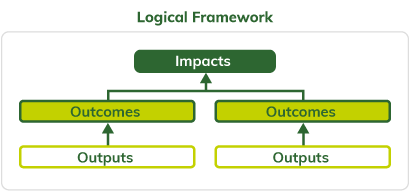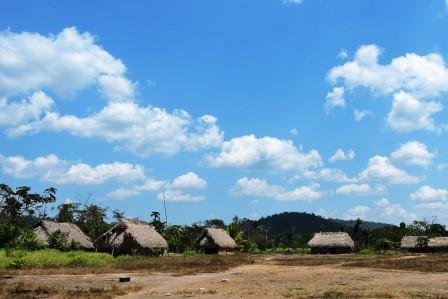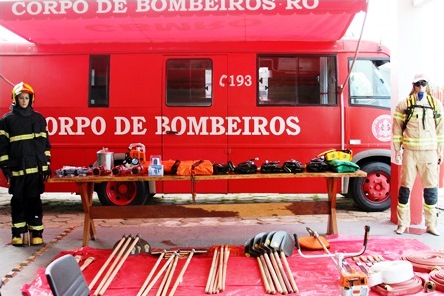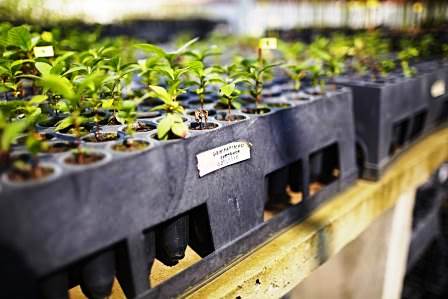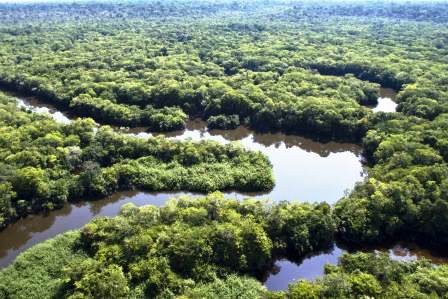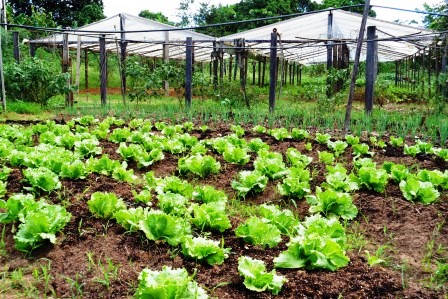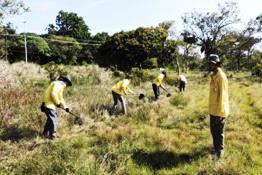INSTITUTIONAL AND ADMINISTRATIVE ASPECTS
In addition to the previously established partnerships with the Secretariat of the Environment in the State of Amazonas, further partnerships were made with the Brazilian bank Bradesco and Coca-Cola Brazil to implement PBF, with FAS establishing, among other affairs, partnerships with the following institutions: Instituto Consulado da Mulher (Women’s Consulate Institute), Rainforest Alliance, Brazilian Institute for Ecological Research (IPÊ), Brazilian Micro and Small Business Support Service (SEBRAE) – Amazonas, Amazonas Center for Technological Education (CETAM), State Secretariat for Labor (SETRAB) – Amazonas, Amazonas State Tourism Company (AMAZONASTUR), Community-based Tourism Forum of the Lower Rio Negro, Amazonian Forum on Climate Change, Iranduba Mayor’s Office, Institute for Sustainable Development of Agriculture and Forestry of the State of Amazonas (IDAM), Amazonas State Research Support Foundation (FAPEAM) and the Institute of Environmental Protection of Amazonas (IPAAM).
With regards to the programme’s general administration, the improvement of internal control systems are worth highlighting, along with the hiring of a full-time system analyst and the training of team members in the use of new software to generate indicators and information regarding the project and PBF.
FAS has a team composed of 80 individuals, 48% of whom are women. 25 individuals of this group perform coordinator roles, with 52% of them being women.
RESULT AND IMPACT INDICATORS
The project’s activities have contributed to the results of the “sustainable production” (1) and “land-use planning” (3) components from the logical framework of the Amazon Fund.
SUSTAINABLE PRODUCTION COMPONENT (1)
Outcome 1.1: Identified and developed economic activities for sustainable use of the forest and biodiversity in the state PAs in Amazonas
Outcome 1.2: Chains of agroforestry and biodiversity products with expanded added value
The main indicators that were agreed upon to monitor these objectives were:
- Number of families that benefited from PBF (output indicator)
The target of the project was to help 10,000 families with the PBF benefit, as well as broaden the scope of PBF from 14 to 20 PAs. The goal of increasing the number of households that benefited from the programme was practically reached (see the table below); however, PBF only widened its reach to 16 PAs, not 20 PAs as was originally planned.
|
PROGRESS IN THE NUMBER OF FAMILIES BENEFITING FROM PBF
|
|
Number of benefited families
|
Accomplished/goal
|
Variation 2015/2010
|
|
Goal
|
2010
|
2015
|
|
10000
|
7.692
|
9.418
|
94%
|
22%
|
Source: Sustainable Amazon Foundation
This PBF’s expansion of territorial scope that was smaller than anticipated ran into the same difficulty encountered by FAS in expanding the financial funding on the scale necessary to achieve such expansion. However, the project was successful in meeting 94% of the goal of reaching 10,000 families with the PBF benefit.
The table shows that, at end of the project’s term, 9,400 families were being assisted by PBF, i.e., around 40,000 people, which represents an expansion of 22% of families in relation to their baseline. Given that these families are spread over an area of more than 10 million hectares, an area larger than that of a sovereign country such as Portugal, this is a significant achievement.
- Revenue from forest-based economic and sustainable use activities – measurement of the variation in revenue from sustainable use forest and economic activities (impact indicator)
Within the PBF component income, the project gave priority to support six productive chains, in addition to eco-tourism, handicrafts and community-based commerce activities. The next table shows the progress of the annual revenue for these economic activities.
Based on the analysis of the the samet table, the revenue with sustainable productive activities developed by the communities in the 16 PAs supported by the project grew by 277% compared to 2010, which was when the project began its activities, i.e., the revenue more than tripled during this period. This is an impact indicator that demonstrates the success of the project to generate revenue for the populations residing in the PAs covered by PBF.
Below are considerations that can qualify the data in the Table below.
- Açaí – the increase in the revenue from açaí was mainly due to the increase of its average price, as well as its integration in the list of sociobiodiversity products supported by the Food Acquisition Programme (PAA) by
the National Supply Company (CONAB), which helped increase the number of producers involved in this activity.
- Handicrafts – revenue from this activity was almost three times higher in 2013 than in 2014, which was due to the higher price of individual items produced that year, mainly bags and shoes, which are produced
according to specific orders from a collection that was nationally marketed on a national basis through a partnership with the Coca-Cola Institute and ASTA Network.
- Cocoa – 2013 saw an intensification of support for the cocoa chain, however, in 2014, there was a significant drop in production due to extreme weather events that occurred in the region, and consequently a drop in revenue.
- Oilseeds – revenue from this product decreased in the period as a result of the drop in production following producers putting more effort into other extractive activities.
|
REVENUE FROM SUSTAINABLE ECONOMIC ACTIVITIES
(IN R$, HISTORICAL VALUES)
|
|
|
2010
|
2011
|
2012
|
2013
|
2014
|
2014 Variation/ beginning of the historical series (%)
|
|
Açaí
|
|
|
2,056.00
|
160,000.00
|
233,987.00
|
109
|
|
Cocoa
|
|
|
|
141,787.80
|
58,140.00
|
-59
|
|
Brazil nuts
|
151,550.83
|
126,852.00
|
117,707.00
|
81,950.00
|
162,560.00
|
7
|
|
Timber
|
|
|
75,479.00
|
52,493.00
|
66,553.01
|
-12
|
|
Oilseeds
|
|
|
990,000.00
|
672,000.00
|
480,000.00
|
-52
|
|
Pirarucu fish
|
1,848,202.72
|
2,662,794.80
|
2,780,302.15
|
4,223,567.85
|
5,011,581.03
|
171
|
|
Tourism
|
|
|
42,217.00
|
17,180.00
|
126,841.00
|
200
|
|
Handicrafts
|
9,909.00
|
98,950.83
|
333,050.29
|
418,983.11
|
72,346.04
|
630
|
|
Diners
|
|
1,017,310.00
|
937,256.00
|
1,492,001.00
|
1,361,955.00
|
34
|
|
TOTAL
|
2,009,662.55
|
3,905,907.63
|
5,388,067.44
|
7,259,962.76
|
7,573,963.08
|
277
|
Source: Sustainable Amazon Foundation
- Average monthly income per family receiving PBF benefit
FAS estimates that there was a growth of 97% in the average monthly income of families receiving PBF benefits (see the next table). This significant increase in income cannot be exclusively attributed to the project, because external factors, such as other social projects and favorable macroeconomic conditions present during this period (increase in the price of some commodities, for example), also contributed to this result.
|
PROGRESS OF THE AVERAGE MONTHLY INCOME OF FAMILIES RECEIVING PBF BENEFITS
|
|
Average monthly income of the families (R$)
|
2010-2015 variation
|
|
2010
|
2010*
|
2015
|
|
407,00
|
548,00
|
1.078,00
|
97%
|
* Values translated into 2015 indices as established according to the variation in the Brazilian National Consumer Price Index (IPCA) from 2010, 2011, 2012, 2013 and 2014.
Source: Sustainable Amazon Foundation
- Annual deforestation of the PAs in the state of Amazonas under the Forest Assistance Programme (impact indicator)
The average annual deforestation in the PAs covered by project decreased by 69% between 2010 and 2014; this performance was more impressive that the other state PAs of sustainable use that did not benefit from PBF, whose deforestation rate reduced by 56% during the same period. This statistic signals that there was a more critical reduction in deforestation in the PAs that benefited from the project’s actions (all PAs of sustainable use) than in the other state PAs of sustainable use.
We can see in the next table that the average deforested area in PAs supported by the project is 0.005%, when compared to the total area of these PAs. Also, the average deforested area in the other state PAs (also sustainable use) in the state of Amazonas that were not supported by the project is 0.014%, which makes it possible to conclude that the deforested area of the PAs that benefited from the project’s actions was about three times less than in other state PAs of sustainable use. However, these data cannot be analyzed alone, and these favorable results should not be attributed solely or predominantly to the project, considering the territorial dimension of the PAs covered by PBF as well as the impact from the Brazilian government’s actions to reduce deforestation in the Amazon.
|
COMPARISON OF THE DEFORESTATION IN PAs SUPPORTED AND NON-SUPPORTED BY PBF
|
|
|
Deforested area in km2
|
|
|
|
PAs Area
(km2)
|
2010
baseline
|
2011
|
2012
|
2013
|
2014
|
2011-2014
Average
(km2)
|
Comparison 2011-2014 average x 2010
baseline (%)
|
Relation 2011-2014 average/ PAs
area (%)
|
|
Deforestation in state PAs in the state of Amazonas with support of the project (sustainable use)
|
104,333.80
|
15.84
|
6.19
|
2.72
|
4.91
|
5.74
|
4.89
|
-69%
|
0,005%
|
|
Deforestation in state PAs of sustainable use in the state of
Amazonas without support of the project (18 PAs) (A)
|
51,141.30
|
16.07
|
10.48
|
4.93
|
5.03
|
7.70
|
7.04
|
-56%
|
0,014%
|
|
Deforestation in state PAs of full protection in the state of Amazonas without support of the project (9 PAs) (B)
|
36,982.60
|
4.13
|
2.08
|
1.17
|
1.10
|
1.09
|
1.36
|
-67%
|
0,004%
|
|
Deforestation in state PAs in the state of Amazonas without support of the project (full protection and sustainable use) (27 PAs) (A) + (B)
|
88,123.90
|
20.20
|
12.56
|
6.10
|
6.13
|
8.79
|
8.40
|
-58%
|
0,010%
|
Source: BNDES, based on data from INPE
LAND-USE PLANNING COMPONENT (3)
Outcome 3.2: Strengthened social organizations in state PAs covered by the Forest Assistance Programme (PBF) in the state of Amazonas
- Number of resident association meetings in the state PAs (product indicator)
460 participatory planning workshops were performed between 2010 and 2015 with resident associations, the objective being to plan actions and deliberate investments.
- Number of regular associations in the PAs covered by PBF (impact indicator)
In 2015, there were 14 duly formalized “parent associations”, with an 86% membership rate, i.e., 8,058 families associated compared with 9,413 families benefiting from PBF. 12 PAs had formalized “parent associations” at the beginning of the project.
- Comparison of the regular associations between state PAs in Amazonas with and without PBF (impact indicator)
This indicator monitored the legal degree of formalization of the associations in PAs with and without PBF. The associations that did not receive benefits from PBF achieved a significant improvement in their legal formalization processes between 2010 and 2015 (see the next table); however, this is still way below the results achieved by the associations in PAs supported by the project. At the end of the project, 88% of associations located in the PAs receiving benefits from PBF were properly formalized, vis-à-vis 40% of community associations in other state PAs that did not receive PBF benefits.
|
COMPARISON OF THE PERCENTAGE OF FORMALIZED ASSOCIATIONS IN PAs SUPPORTED AND NON-SUPPORTED BY PBF
|
|
% of formalized associations in 2010
|
(A) - (B)
|
% of formalized associations in 2015
|
(C) - (D)
|
|
PAs with PBF (A)
|
PAs without PBF (B)
|
PAs with PBF (C)
|
PAs without PBF (D)
|
|
93%
|
13%
|
80%
|
88%
|
40%
|
48%
|
Source: Sustainable Amazon Foundation
LESSONS LEARNED
PBF was one of the first projects supported by the Amazon Fund and demanded a great deal of interaction between FAS’s and BNDES’s technical teams. Both organizations went through a learning process based on the diverse situations involved in the project.
As regards to accountability, it was necessary for FAS and the beneficiaries of PBF to reassess their requirements. The challenge was to maintain BNDES’s standards and requirements while understanding the context and conditions of the beneficiaries: river populations from the countryside in Amazonas.
The project also brought with it a sense of belonging and appreciation for the collective nature of implementing and consolidating the actions, which made it possible to instigate the processes of social organization for the benefited communities. These premises are essential for empowering the associations and community leaders.
SUSTAINABILITY OF RESULTS
An important legacy of PBF was consolidating a participatory and inclusive methodology, which is based on the desires and demands of the beneficiary families and with a style of language that is accessible by the local reality, thereby ensuring that the local communities would be involved.
Training the association leaders to manage the enterprises themselves, with emphasis on natural resource sustainability and conservation, is an initiative that helps provide the actions with continuity, which is achieved by increasing the involvement and the autonomy of riverside dwelling populations in sustainable activities.
In the medium term, it is possible to see that the associations of the PAs that benefit from PBF could become service centers for logistical support, technical assistance and financial support to its members and other partners.
Constructing a new economic model in the Amazon is a challenge that depends on the continuity of both the actions against deforestation and the actions to promote a sustainable forest-based economy. The project was successful in terms of structuring productive chains of sociobiodiversity and activities related to handicraft, eco-tourism and community commerce, representing an important step towards ensuring the conservation and the sustainable use of natural resources in the Amazon biome. The definitive consolidation of these results and their repetition will depend on the continuation of this type of investment, especially in terms of supporting product chains in the forest and on the strengthening of roles of entrepreneurs and the community-based associations, so as to obtain growth and integrate them with the most dynamic sectors of the economy.


